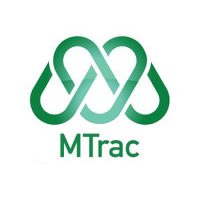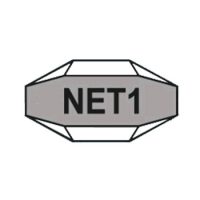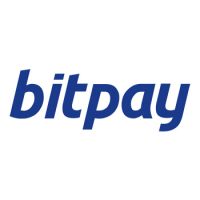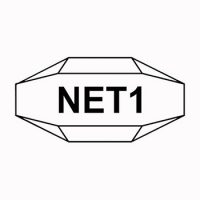Blockchain
CoinGeek Delves Into What FinCEN’s New Guidelines Mean for DApps, Lightning Network and Privacy Coins

 Reading Time: 3 minutes
Reading Time: 3 minutes
If there is one thing that the Financial Crimes Enforcement Network (FinCEN) has highlighted with the issuance of its new virtual currency interpretive guidance, it’s that the move has reinforced what responsible thought leaders and experts in the industry have been saying for a while—that it’s time for Bitcoin and the rest of the cryptocurrency ecosystem to grow up and respect laws.
On Thursday, the U.S. regulatory agency issued a new guidance that addresses whether certain cryptocurrency-related businesses need to be regulated as money services businesses (MSB) and comply with the Bank Secrecy Act (BSA) and other relevant laws in the country. The new “interpretive guidance” is a consolidation of FinCEN’s current regulations as well as related administrative guidance issued since 2011 involving “convertible virtual currencies.”
The guidance specifically outlines how decentralized applications (DApps), defined by FinCEN as “software programs that operate on a P2P network of computers running on a blockchain platform,” may qualify as a money transmitter especially if they “accept and transmit value, regardless of whether they operate for profit”—like a virtual currency ATM, vending machine, or a physical kiosk.
“Accordingly, when DApps perform money transmission, the definition of money transmitter will apply to the DApp, the owners/operators of the DApp, or both,” according to FinCEN. This means these types of DApp services will have to secure a license in the state or states they are currently operating in, as well as federal anti-money laundering and Know-Your-Customer procedures.
FinCEN guidance likely to halt Lightning Network
Like in the case of DApps, FinCEN’s new guidance will also make it even more challenging for the Lightning Network on Bitcoin Core (BTC) to grow. As Founding President of the Bitcoin Association, Jimmy Nguyen, explains, Lightning Network nodes are likely to fall within FinCEN’s broad interpretation of money transmitters, which means they would be required to register as MSBs and comply with AML regulations. According to Nguyen, a former 21+year lawyer in the United States focused on technology:
“FinCEN reinforces the definition of ‘money transmission services’ is very broad, and means the transmission of virtual currency from one person to another triggers MSB requirements. FinCEN also confirms that virtual currency payment processors (intermediaries between traditional merchants and customers who want to pay for goods and services with virtual currency) fall within the definition of money transmitters. Given how broad these definitions are, I expect FinCEN’s guidance will further inhibit growth of the Lightning Network beyond traditional payment processors who already hold MSB licenses.”
Not surprisingly, even privacy-centric coins like Zcash, Verge and Monero cannot escape MSB and AML laws. Creators and sellers of anonymity-enhanced coins, along with providers of anonymizing services like coin mixers or tumblers are considered money transmitters in the U.S..
“A money transmitter that operates in anonymity-enhanced CVCs for its own account or for the accounts of others (regardless of the frequency) is subject to the same regulatory obligations as when operating in currency, funds, or nonanonymized CVCs [convertible virtual currencies]. In other words, a money transmitter cannot avoid its regulatory obligations because it chooses to provide money transmission services using anonymity-enhanced CVC,” according to FinCEN.
This isn’t surprising, according to Nguyen, given that FinCEN is a bureau of the U.S. Treasury Department that focuses on combating money laundering and terrorism financing, along with other financial crimes. As such, Nguyen says the agency “will not let privacy coin advocates avoid compliance with laws designed to stop financial crimes.”
Not everyone is an MSB
FinCEN recognizes that non-custodial wallets are not money transmitters; however, custodial wallets can trigger MSB requirements for the host. All crypto exchanges are custodial, which means they are always MSBs, even if operators like Binance focus only on crypto.
Fundraising via ICOs is also likely not engaging in money transmittal, but token offerings can still be regulated by the U.S. Securities and Exchange Commission (SEC) if they offer securities.
The U.S. agency has yet to provide an answer for every situation that takes place in the crypto market, but the new guidance it issued is a step in the right direction towards providing clarity on whether common virtual currency business models will trigger MSB and AML laws in the country. As Nguyen summarizes:
“FinCEN’s new guidance on virtual currencies reinforces what we’ve been saying for a while: it’s time for Bitcoin and the cryptocurrency world to grow up. This means businesses operating in the space need to live in the real world and comply with real world laws, including those governing money services businesses, money transmitters and anti-money laundering, and other Bank Secrecy Act requirements. Unlike other crypto-anarchist camps in the Bitcoin world, Bitcoin SV is building a regulation-friendly ecosystem and we are advising on responsible legislation around the world. While there remains room for more improvement and clarifications, FinCEN’s guidance is a good step to actually help Bitcoin grow by inhibiting its usage for illegal activity, and thus making financial institutions and consumers more comfortable using Bitcoin.”
SOURCE CoinGeek
Blockchain
Halving weakness sees $206 million exit crypto funds, Bitcoin miners pivot to AI

Leading up to Friday’s Bitcoin (BTC) halving, investors opted to remain on the sidelines rather than increase their exposure to cryptocurrencies. CoinShares’ latest report on digital asset fund flows reveals that crypto funds experienced $206 million in outflows last week, while trading volumes for Exchange-Traded Products (ETPs) dropped to $18 billion.
James Butterfill, head of research at CoinShares, noted, “These volumes represent a lower percentage of total Bitcoin volumes (which continue to rise) at 28%, compared to 55% a month ago.” He attributed this decline in investor appetite to expectations that the Federal Reserve would maintain interest rates at elevated levels for a longer duration.
In terms of regional flows, the United States led the outflows with $244 million exiting incumbent ETFs by the week ending April 19. Butterfill highlighted that newly issued ETFs still received inflows, albeit at lower levels compared to previous weeks. Germany and Sweden saw outflows of $8.3 million and $6.7 million, respectively, while Canada experienced inflows of $29.9 million. Switzerland, Brazil, and Australia also witnessed inflows of $7.8 million, $5.5 million, and $2.2 million, respectively.
Butterfill observed that although Bitcoin saw outflows of $192 million, there were minimal flows into short-Bitcoin positions. Ethereum (ETH) experienced outflows of $34 million for the sixth consecutive week. However, multi-asset funds saw improved sentiment, attracting $8.6 million in inflows. Additionally, Litecoin (LTC) and Chainlink (LINK) received inflows of $3.2 million and $1.7 million, respectively.
The report highlighted that blockchain equities sustained their 11th consecutive week of outflows, totaling $9 million, as investors remained concerned about the halving’s impact on mining companies.
In a separate analysis of the post-halving crypto mining industry, CoinShares analysts suggested that many miners might transition to serving the artificial intelligence (AI) sector, which has become more lucrative. They anticipated a shift towards AI in energy-secure locations, potentially leading to Bitcoin mining operations relocating to stranded energy sites.
The analysts projected a 10% decline in the Bitcoin network’s hash rate after the halving as miners deactivate unprofitable ASICs. However, they expected the hash rate to reach 700 exahash (EH/s) by 2025. As of the current data, the Bitcoin hash rate stands at 596.22 EH/s.
The report also noted that substantial cost increases are anticipated due to the halving, with electricity and production costs nearly doubling. Mitigation strategies include optimizing energy costs, enhancing mining efficiency, and securing favorable hardware procurement terms. Miners are actively managing financial liabilities, with some utilizing excess cash to significantly reduce debt.
Source: kitco.com
The post Halving weakness sees $206 million exit crypto funds, Bitcoin miners pivot to AI appeared first on HIPTHER Alerts.
Blockchain
NYSE gauges interest in 24/7 stock trading like crypto

According to reports, the New York Stock Exchange (NYSE) is exploring the possibility of introducing round-the-clock trading, a model akin to that of cryptocurrency markets. In a bid to gauge market sentiment, NYSE’s data analytics team has circulated a survey among market participants. The survey seeks feedback on whether there is support for 24/7 or extended weekday trading hours and, if so, what measures should be implemented to safeguard traders against overnight price fluctuations. As of now, NYSE, alongside Nasdaq and the Chicago Board Options Exchange, operates from Monday to Friday, spanning from 9:30 am to 4:00 pm Eastern Time.
In the United States, assets like cryptocurrencies, United States Treasurys, foreign exchange, and major stock index futures are already tradable 24/7. Certain brokerages, such as Robinhood and Interactive Brokers, provide access to U.S. stocks throughout the week via a “dark pool” trading venue, catering to international retail investors during their local trading hours.
However, recent reports indicated that Robinhood suspended its 24-hour trading services amidst heightened tensions between Israel and Iran, prompting concerns among investors regarding the sustainability of continuous trading.
Effectively managing liquidity in a 24/7 trading environment has proven challenging for trading platforms within the cryptocurrency industry.
According to cryptocurrency research firm Kaiko, there’s often a mismatch between the operating hours of traditional financial institutions and the needs of major crypto traders and market makers. Traders frequently find themselves losing sleep during periods of extreme market volatility.
While the results of NYSE’s survey haven’t been revealed, Tom Hearden, a senior trader at Skylands Capital, conducted his own poll among his 19,300 followers, asking if they would support NYSE transitioning to 24/7 trading hours. Interestingly, over 70% of the 1,459 respondents voted “No.”
NYSE’s survey coincides with the efforts of startup firm 24X National Exchange, which is seeking approval from the Securities and Exchange Commission (SEC) to launch the first exchange in the country operating round-the-clock.
The FT said, citing two persons familiar with the subject, that the SEC has “months” to study the proposed rule change, and other relevant issues, such who should shoulder expenses and the function of clearing houses, are already being considered by other stakeholders.
“How loud they will be playing in the middle of the night is unknown to me. However, the decision of whether something is commercially feasible or not actually shouldn’t be made by the SEC, James Angel, a Georgetown University finance professor, told FT.
“I support letting the market make the decision. We’re all better off if it succeeds, and the exchange’s stockholders lose out if it fails.
After the company withdrew an application in March 2023, alleging operational and technological concerns, it is the second attempt to receive SEC clearance.
Source: cointelegraph.com
The post NYSE gauges interest in 24/7 stock trading like crypto appeared first on HIPTHER Alerts.
Blockchain
Online Banking Market to Grow at CAGR of 14.20% through 2033, Key Takeaways of Digital Banking, Banking Ecosystem, Financial Giants & Disruptive Startups
-

 Blockchain4 days ago
Blockchain4 days agoPhoenix Group Engages BHM Capital as Liquidity Provider to Boost ADX Liquidity and Enhance Market Dynamics
-

 Blockchain5 days ago
Blockchain5 days agoQuantum eMotion Files a Patent for Quantum-based Blockchain Wallet Under the Patent Cooperation Treaty (PCT)
-

 Blockchain Press Releases5 days ago
Blockchain Press Releases5 days agoCanaan Shines at Blockchain Life 2024 in Dubai
-

 Blockchain Press Releases5 days ago
Blockchain Press Releases5 days agoBybit Institutional Report 2024: Institutions Become Bullish and Eye Challenger Chains, while VC Funding Resurges for Infrastructure, Gaming, and AI
-

 Blockchain5 days ago
Blockchain5 days agoElizabeth Warren Urges Treasury Secretary Yellen to Implement Strong AML/CFT Measures for Stablecoins
-

 Blockchain Press Releases6 days ago
Blockchain Press Releases6 days agoBybit and Franck Muller Partner with Sidus Heroes to Launch Cosmic Gears: A Pioneering Web3 Game with a $250,000 Prize Pool and Exclusive Watch Collection
-

 Blockchain4 days ago
Blockchain4 days agoTether USDT stablecoin goes live on TON blockchain
-

 Blockchain4 days ago
Blockchain4 days agoCrypto fans count down to bitcoin’s ‘halving’











































